STEM (Science, Technology, Engineering, and Mathematics) education for toddlers is all about fostering curiosity, problem-solving, and hands-on learning through play. Early exposure to STEM concepts helps build foundational skills that support cognitive development and creativity. The following article provides information on Ways to Introduce STEM to Toddlers, STEM Activities For Toddlers, STEM Materials, STEM Goals, Linking EYLF To STEM and more.
Ways to Introduce STEM to Toddlers
- Simple Science Experiments – Activities like magic milk (using food coloring and dish soap) or rain in a jar (shaving cream and water) introduce basic scientific concepts in a fun way.
- Building and Engineering – Encourage toddlers to build structures using blocks, Legos, or household items. This helps develop spatial awareness and problem-solving skills.
- Technology Exploration – Interactive apps, coding toys, and simple robotics can introduce technology in an engaging way.
- Math Through Play – Counting games, sorting objects by size or color, and measuring ingredients while cooking help toddlers develop early math skills.
- Outdoor STEM Activities – Observing nature, measuring rainfall, or exploring how shadows change throughout the day can spark curiosity about the world.
STEM Activities For Toddlers
Science Activities
-
Sink or Float Experiment – Fill a tub with water and have toddlers test different objects to see which sink and which float.
-
Rainbow Walking Water – Use jars of water and paper towels to explore how colors mix and travel through absorption.
-
Bubble Science – Experiment with different bubble solutions and wands to see which creates the biggest bubbles.
-
Ice Excavation – Freeze small toys in ice and let toddlers melt them using warm water and salt.
Technology Activities
-
Cause and Effect Games – Use toddler-friendly apps that introduce basic technology concepts like tapping to trigger animations.
-
Toy Circuit Exploration – Play with battery-operated toys to learn how switches work.
-
Light and Shadow Play – Use flashlights to explore how shadows change with different angles.
-
Simple Coding Games – Introduce basic coding concepts with toys like Code-a-Pillar or simple sequencing activities.
Engineering Activities
-
Building Bridges – Challenge toddlers to build a bridge using blocks or household items.
-
Marble Run Fun – Create simple marble runs using paper tubes and tape to explore gravity and motion.
-
Paper Airplane Challenge – Fold different types of paper airplanes and test which flies the farthest.
-
Stacking Cups – Build towers using plastic cups and explore balance and stability.
Math Activities
-
Pattern Matching – Arrange colored objects in patterns and encourage toddlers to continue the sequence.
-
Counting with Everyday Items – Count spoons, socks, or snacks to make math fun in daily life.
-
Shape Hunt – Go on a scavenger hunt to find different shapes around the house or outdoors.
-
Sorting and Graphing – Sort objects by color, size, or type and create simple graphs using stickers or drawings.
STEM Materials
There are plenty of STEM materials that can help toddlers explore science, technology, engineering, and math through play! Here are some great options:
Science Materials
-
Magnifying Glass – Helps toddlers observe details in nature.
-
Water Play Tools – Cups, funnels, and droppers for experiments with volume and flow.
-
Color Mixing Kits – Safe food coloring and water trays to explore color blending.
Technology Materials
-
Interactive STEM Toys – Simple coding toys like Bee-Bots or light-up circuits.
-
Cause-and-Effect Gadgets – Toys with buttons, levers, and gears to explore movement.
Engineering Materials
-
Building Blocks – Wooden blocks, magnetic tiles, or LEGO Duplo for construction play.
-
Marble Runs – Simple tracks to explore gravity and motion.
-
DIY Fort Kits – Pillows, blankets, and cardboard boxes for creative engineering.
Math Materials
-
Counting Bears or Beads – Helps toddlers practice sorting and counting.
-
Shape Puzzles – Wooden or foam puzzles to recognize different shapes.
-
Measurement Tools – Rulers, measuring cups, and balance scales for hands-on math.
STEM Goals
STEM goals for toddlers focus on fostering curiosity, problem-solving, and foundational skills in science, technology, engineering, and math through play-based learning. Here are some key goals:
Science Goals
-
Encourage exploration of the natural world (e.g., observing plants, animals, and weather).
-
Develop basic cause-and-effect understanding through simple experiments.
-
Introduce sensory experiences (e.g., mixing colors, playing with textures).
Technology Goals
-
Familiarize toddlers with basic technology (e.g., pressing buttons, using simple apps).
-
Encourage problem-solving with interactive toys.
-
Teach early digital literacy through guided screen time.
Engineering Goals
-
Develop spatial awareness through building activities (blocks, stacking cups).
-
Encourage creativity in designing and constructing simple structures.
-
Introduce trial-and-error thinking by testing different solutions.
Math Goals
- Build early counting skills through everyday activities.
- Recognize and sort shapes, colors, and sizes.
- Introduce patterns and sequencing through play.
Linking EYLF To STEM
The EYLF and STEM education are closely linked, as both emphasize inquiry-based learning, problem-solving, and hands-on exploration. Here’s how EYLF connects to STEM:
1. EYLF Principles and STEM
-
Play-Based Learning—STEM activities encourage curiosity and experimentation, aligning with EYLF’s focus on play-based learning.
-
Intentional Teaching—Educators can introduce STEM concepts through guided discovery and structured activities.
-
Learning Environments—STEM-rich environments foster creativity, exploration, and problem-solving.
2. EYLF Learning Outcomes and STEM
-
Outcome 1: Identity—STEM builds confidence as children explore and test ideas.
-
Outcome 2: Community—STEM activities encourage collaboration and teamwork.
-
Outcome 3: Wellbeing—Hands-on STEM experiences support cognitive and physical development.
-
Outcome 4: Learning—STEM fosters inquiry, reasoning, and problem-solving skills.
-
Outcome 5: Communication—STEM encourages children to express ideas, ask questions, and engage in discussions.
3. EYLF Practices and STEM
-
Holistic Approaches—STEM integrates multiple disciplines, supporting holistic learning.
-
Responsiveness to Children—STEM activities can be tailored to children’s interests and developmental stages.
-
Learning Through Play—STEM naturally fits into play-based learning, making concepts accessible and engaging.
Further Reading
STEM Education
STEM: Teaching Guide For Educators
Examples of STEM Experiences
Introducing STEM To Children In Early Childhood Settings
STEM



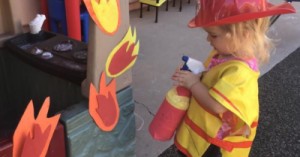



 Open ended questions cannot be responded to with one word answers such as yes or no. These types of questions enables a child to provide
Open ended questions cannot be responded to with one word answers such as yes or no. These types of questions enables a child to provide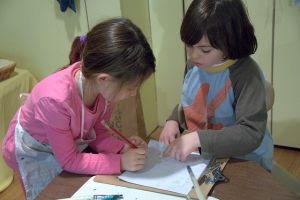 During your child’s preschool years, an important milestone begins to emerge. This is the development of pre-writing skills. Pre-writing skills are used to encourage, develop
During your child’s preschool years, an important milestone begins to emerge. This is the development of pre-writing skills. Pre-writing skills are used to encourage, develop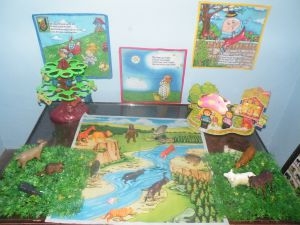 Open ended materials enables children to play freely. They are objects that have no rules to follow, use or function. Raw materials that can be
Open ended materials enables children to play freely. They are objects that have no rules to follow, use or function. Raw materials that can be An Acknowledgment of the Country is a way of showing respect for the Traditional Owners and can be given by both non-Indigenous people and Aboriginal
An Acknowledgment of the Country is a way of showing respect for the Traditional Owners and can be given by both non-Indigenous people and Aboriginal Language plays an important role in a child’s development. It enables a child to communicate effectively with their family, learn at school, socialize with friends,
Language plays an important role in a child’s development. It enables a child to communicate effectively with their family, learn at school, socialize with friends, Like adults, children have to deal with their own stress in life. Moving house, starting a new school, preparing for a new sibling - these are
Like adults, children have to deal with their own stress in life. Moving house, starting a new school, preparing for a new sibling - these are Playdough is such a versatile material. It provides numerous benefits to children as they manipulate it, it is safe and soothing and provides children with
Playdough is such a versatile material. It provides numerous benefits to children as they manipulate it, it is safe and soothing and provides children with Teaching children about sustainability enables them to appreciate and respect the natural environment. Early childhood services can provide meaningful hand on learning experiences in order
Teaching children about sustainability enables them to appreciate and respect the natural environment. Early childhood services can provide meaningful hand on learning experiences in order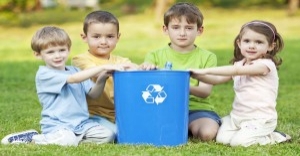 Recycling is an important concept that teaches children to care for the environment. It encourages children to be responsible and show a growing appreciating for
Recycling is an important concept that teaches children to care for the environment. It encourages children to be responsible and show a growing appreciating for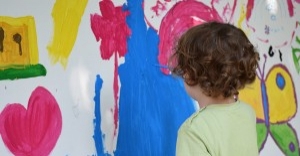 When children apply paint to paper, glue things together, or pound a lump of clay, they experiment with colour, shape design and texture.
When children apply paint to paper, glue things together, or pound a lump of clay, they experiment with colour, shape design and texture.



